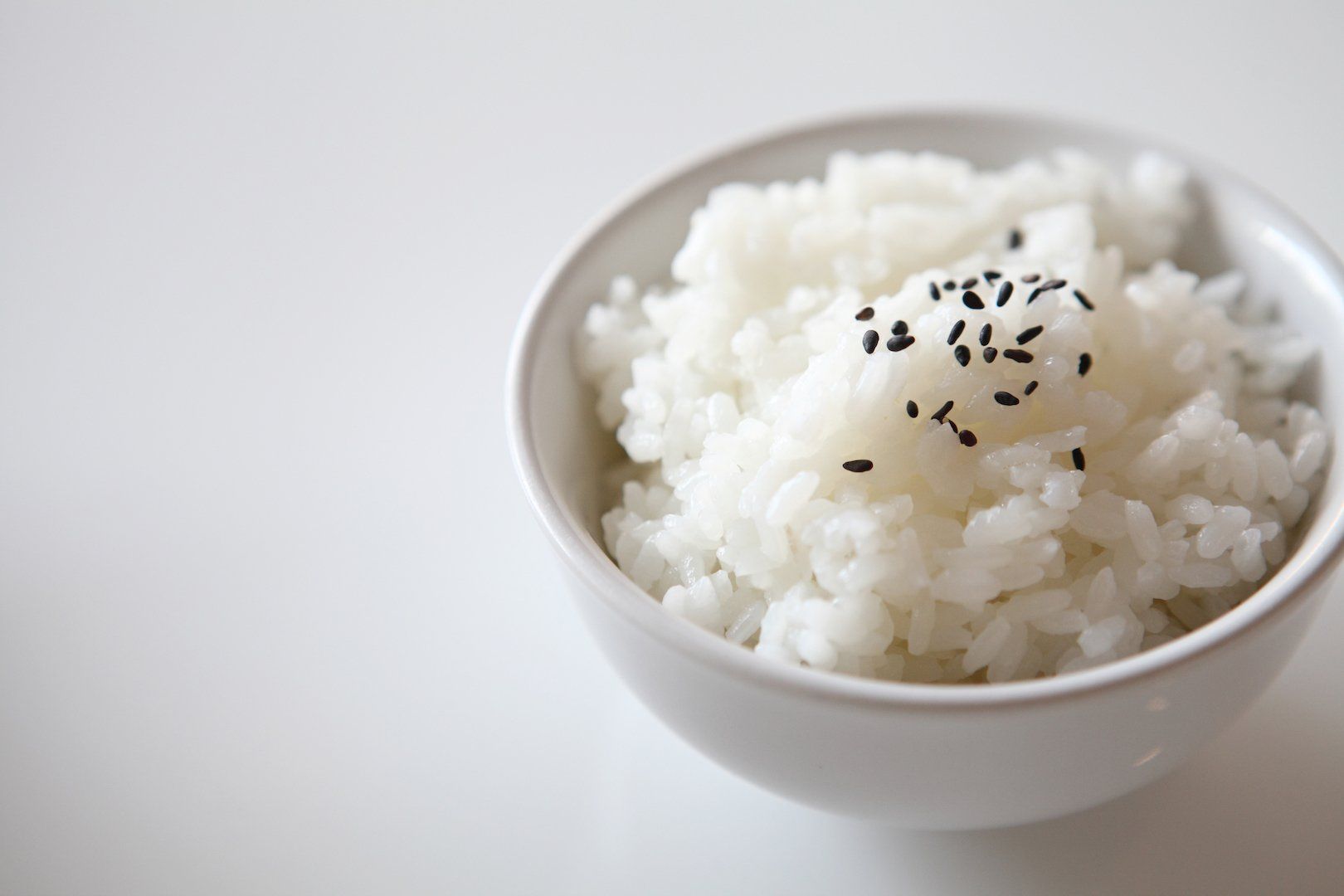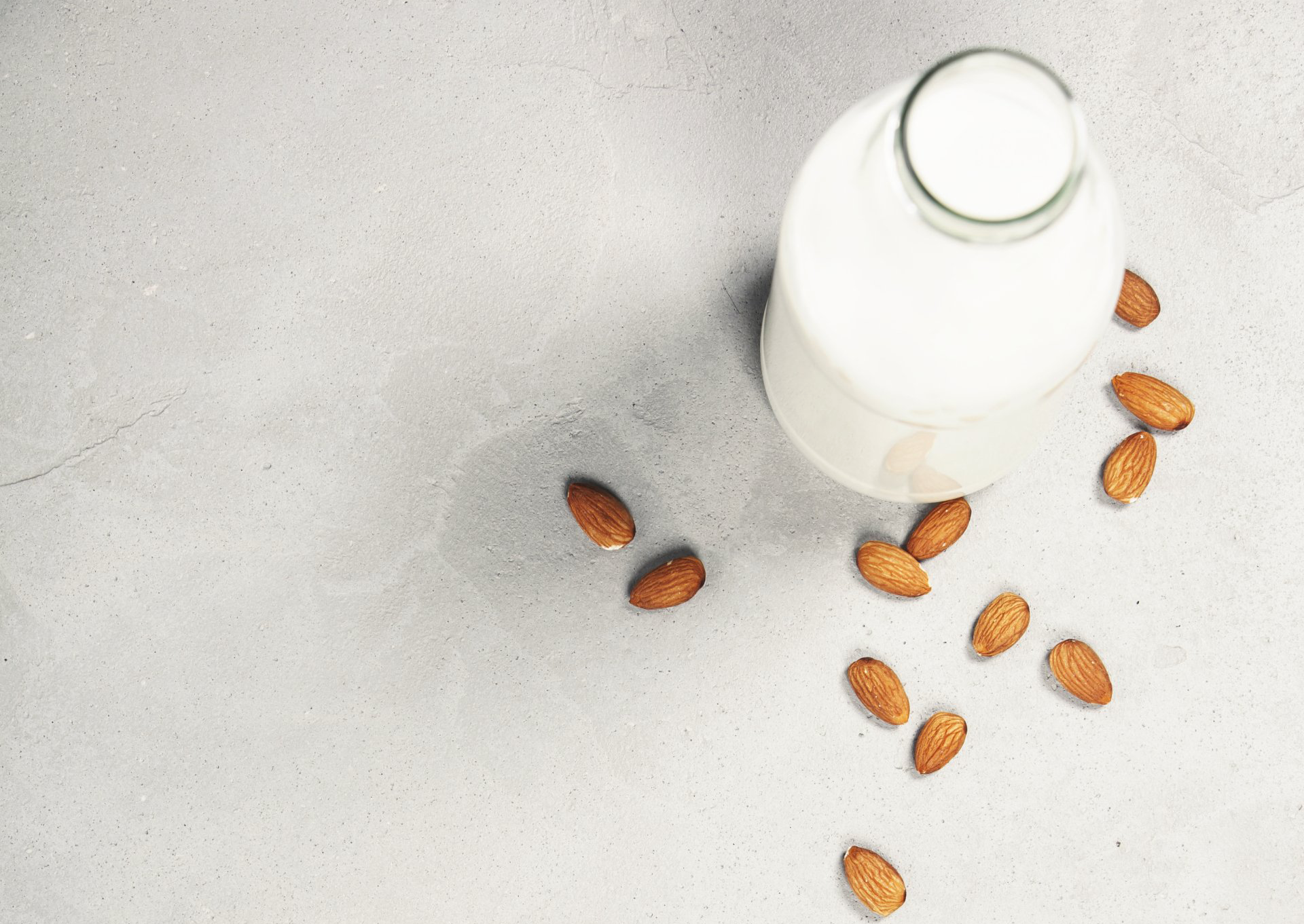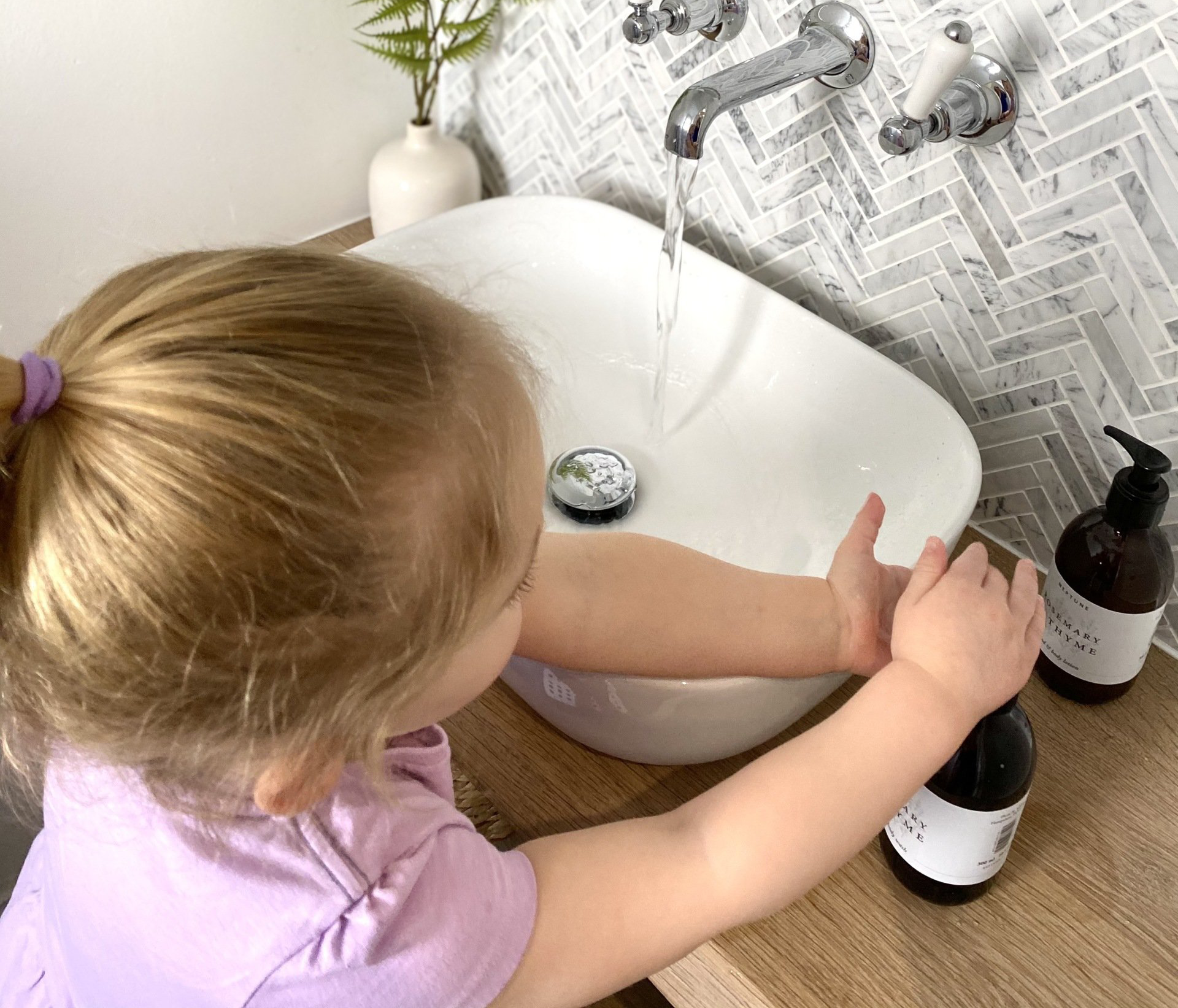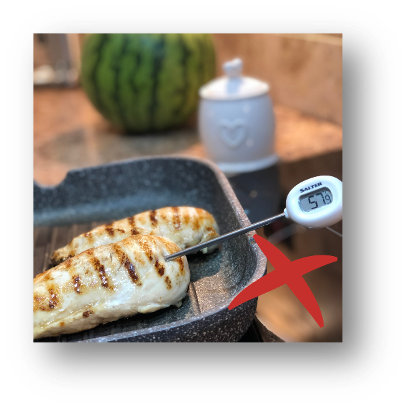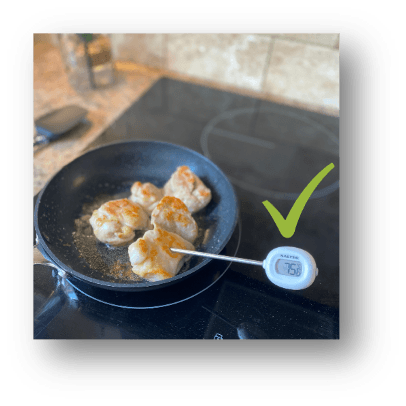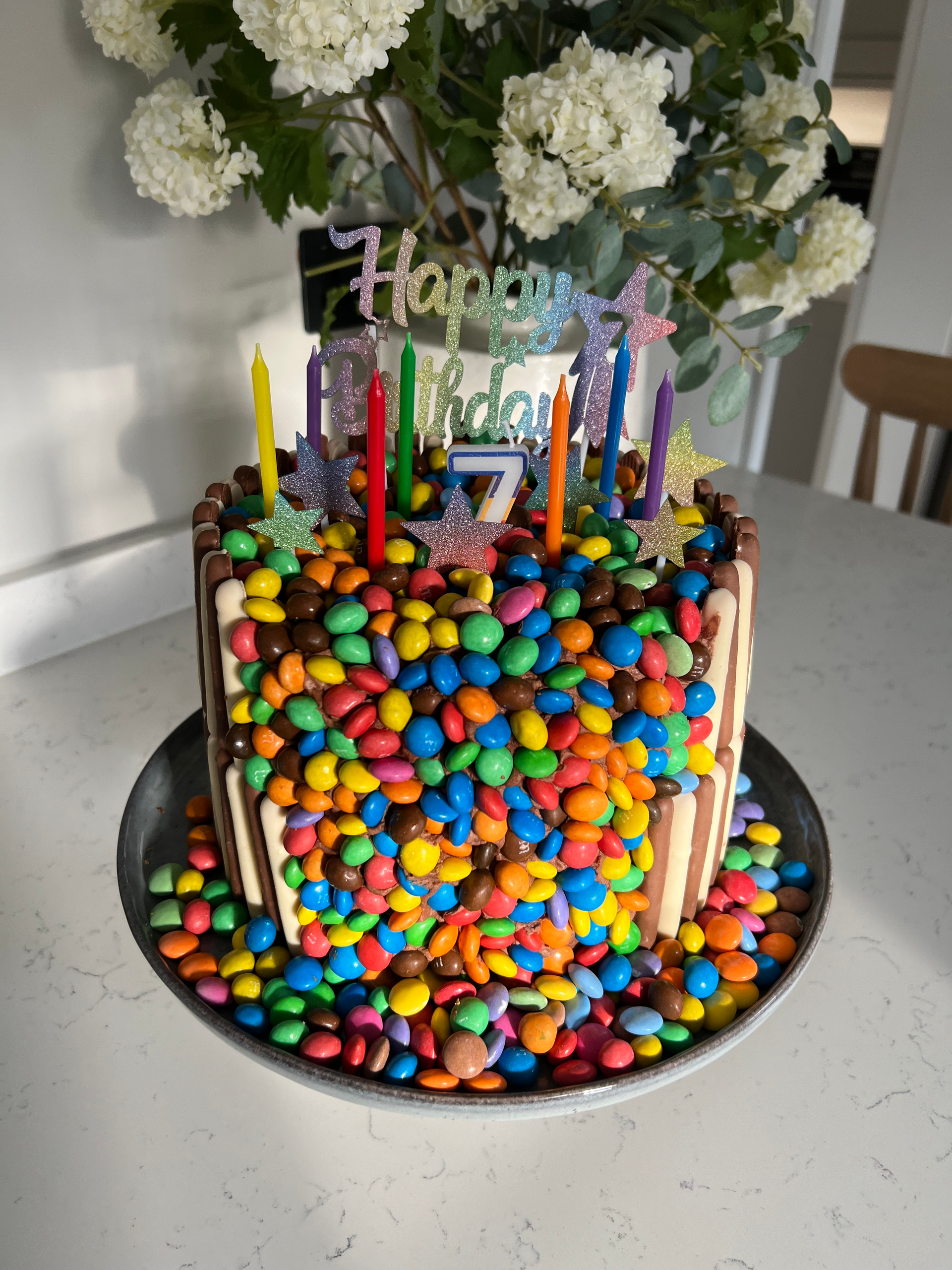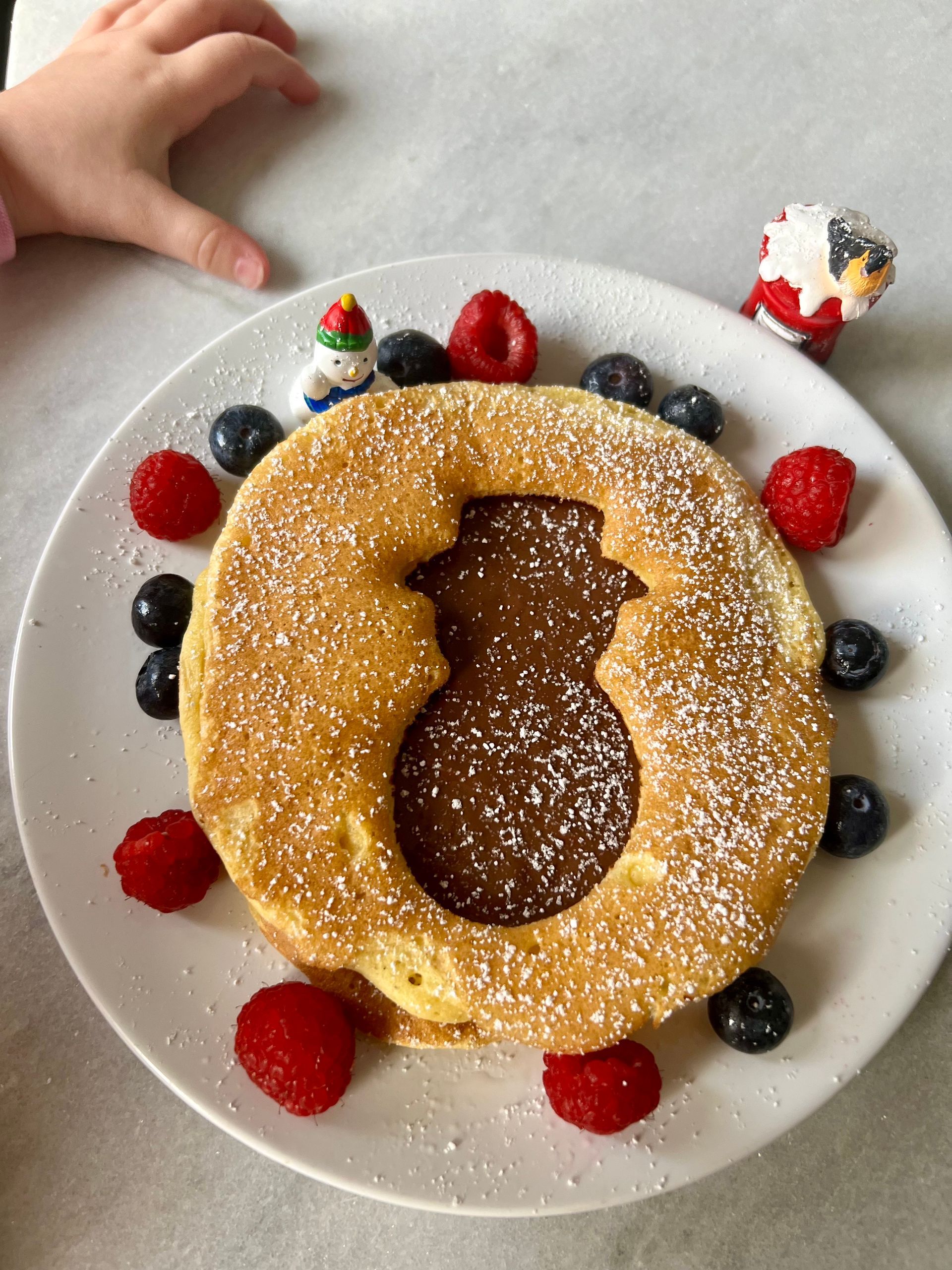Cooking & Reheating Baby Food
- Wash your hands – Always wash your hands thoroughly before preparing any food, and after handling raw meat
- Clean work surfaces
- Disinfect food preparation surfaces using a clean dishcloth before starting any food preparation. If you can, use a paper towel squirted with anti-bacterial spray to clean surfaces after preparing raw meat and poultry as this will help make sure that you don’t pick up food poisoning germs and spread them around the kitchen!
- Clean utensils
– Make sure equipment is clean before you start using it and if you can, opt for colour coded equipment to reduce the risk of cross contamination between raw and ready to eat foods. Never prepare ready to eat food such as salad on a board that was previously used to prepare raw meat.
- Wash fruit and Veg
– They might be low risk foods, but bacteria can also be found on fruit and veggies too so don’t forget to wash these thoroughly under cold running water before serving to baby. If you’re using frozen veggies in baby’s food, make sure that these are cooked before serving to your baby according to the back of pack information.
- Don’t be tempted to wash raw chicken!
Washing your chicken will not ‘wash off’ the bacteria (only cooking will make it safe to eat!). If you wash chicken, you are instead more likely to cause food poisoning by inadvertently spreading more bacteria around the kitchen.
- Use a food probe –
Checking the temperature of the thickest part of meat is the most accurate way (and the way I would recommend) to check food is cooked, whilst also making sure it is not overcooked! If using a probe, make sure the probe is clean and the meat has a core temperature of 75C for at least 30 seconds.
- Cut into the thickest part of the meat to make sure there is no pink meat visible
- The meat must be steaming hot throughout
- Meat juices run clear
Cool Foods Quickly
I am a huge fan of keeping leftovers to use as an easy meal another day! After cooking, make sure you cool any leftovers and pop into the fridge or freezer as soon as possible. Never allow food to sit out on the side for more than 2 hours after cooking.
Be aware that simply putting your hot food in the fridge may not be enough to make sure it is cooled down quickly and safely! There are lots of things you can do to help speed up the cooling of food such as dividing into smaller portions, using an ice bath or stirring regularly.
Keep Leftovers for Another day
Whether you have no children, young children or older children... reheating leftovers is always a good idea! As a rule of thumb, leftover food can be kept in the fridge and used within 2 days (1 day for rice) but if you want longer than this, then just pop your leftovers in the freezer.
Defrosting Purees
If defrosting baby purees, the best way to do this would be overnight in the refrigerator and use within 24 hours…
But, did you know that you can cook baby purees from frozen?!
Reheating Purees
Baby purees are often best served at room temperature, but don’t be tempted to partially reheat food for your baby to avoid having to wait for it to cool. Unless served cold straight from the fridge, baby purees should always be reheated until piping hot; which means steaming throughout, to kill off bacteria.
The best ways to reheat baby are:
- On the hob
- In the microwave
If cooking a portion of baby puree from frozen, make sure you increase the cooking time and stir regularly (every 20-30 seconds) to ensure there are no hot spots and that the puree is evenly heated so it is piping hot throughout.
Remember though that foods can only be reheated once so make sure you divide your puree into baby friendly portions before storing in the fridge or freezer!
Hopefully you find this blog useful in helping you prepare for the weaning journey with your little one!
Check out more blogs here

